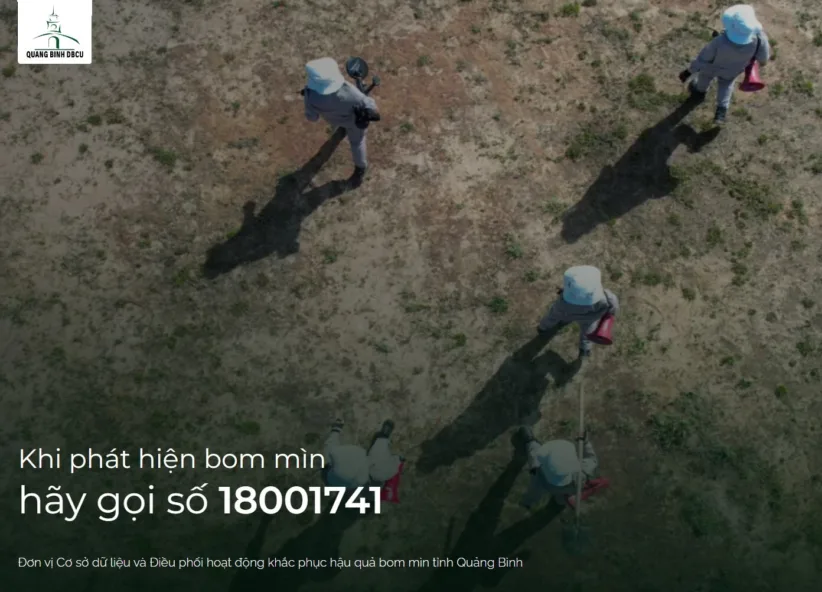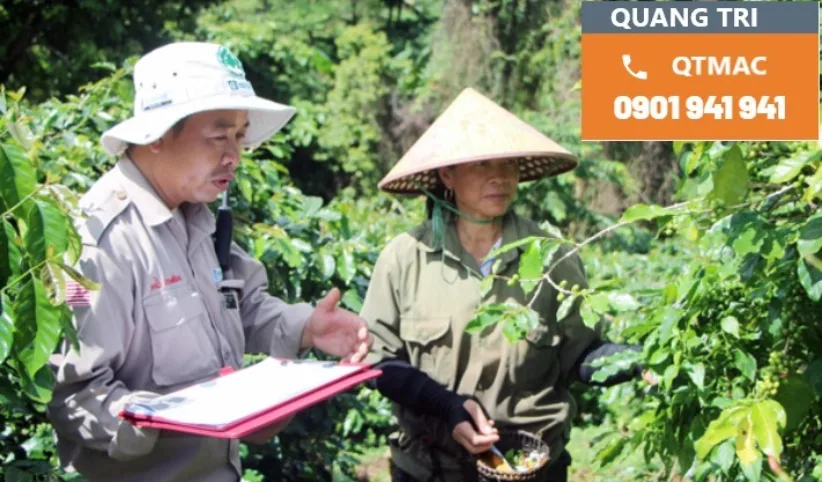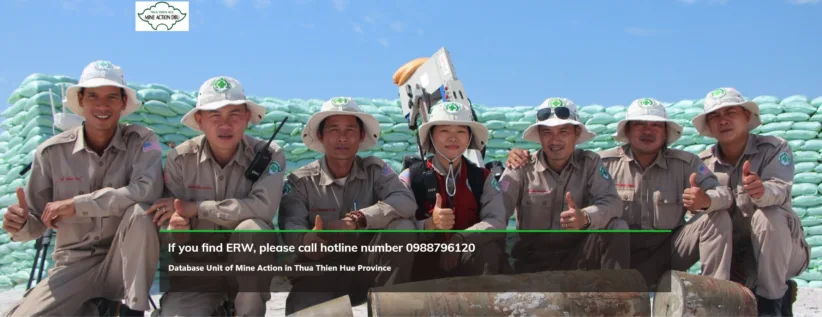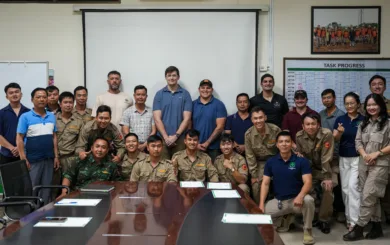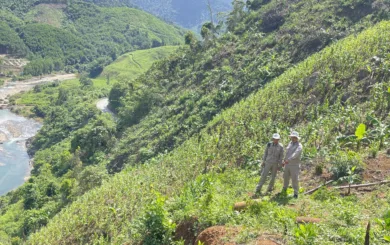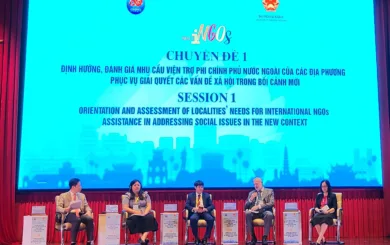As a result of several conflicts during the last century, Vietnam remains one of the world’s most heavily contaminated countries from explosive ordnance (EO), primarily cluster munition remnants, aircraft bombs and other munitions from land battles. Landmines impact smaller areas, primarily in the northern border provinces.
A national EO-impact survey, completed by the Government of Vietnam in 2014, reveals that all 63 provinces in the country are contaminated with EO - with contamination covering around 18% of its land.
Since 1975, accidents in Vietnam are estimated to have impacted more than 105,000 persons, and resulting in more than 38,000 fatalities and 66,000 injuries. However, it should be noted that this estimate is believed to be conservative as complete and updated country-wide statistics are not available.
While the yearly number of accidents is thought to be declining, unsafe land use practices are still very common, and EO accidents, unfortunately, continue to occur despite people’s awareness of contamination.
Such a risk stems from economic necessity, as the areas with the highest level of contamination are amongst the poorest and least developed in Vietnam. The continued presence of cluster munitions and other EO are also linked with high levels of fear amongst those living in affected communities.
Removing the risk of accidents, thereby enabling communities to use their land, is therefore one of the greatest impacts of NPA’s work in Vietnam.
NPA VIETNAM'S HOTLINE FOR REPORTING EXPLOSIVE ORDNANCE:
-
Quang Binh province: 18001741 || Quang Tri province: 0901941941 || Thua Thien Hue province: 0988796120
-
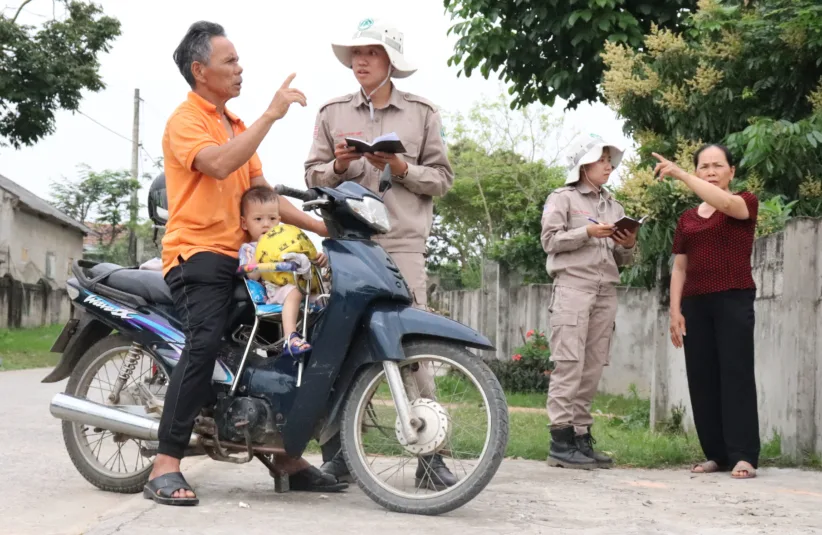
Norwegian People's Aid in Vietnam
NPA’s mine action programme in Vietnam was established in 2007, and activities are now implemented in the four provinces of Quang Tri, Thua Thien Hue, Quang Binh and Kon Tum.
NPA is also undertaking needs assessments in other provinces with suspected high levels of contamination, so the benefits of international mine action can be felt by impacted communities that previously have received little or no support.
NPA’s key activity in Vietnam is cluster munition remnants survey (CMRS) - a methodology developed by NPA in response to the specific context of contamination in South-East Asia.
CMRS is an evidence-based survey methodology that seeks to rapidly identify areas with confirmed contamination from cluster munitions so that clearance resources may focused on these.
Together with NPA’s clearance and explosive ordnance disposal activities, the programme is thereby able to improve the safety and livelihoods of local communities, provide protection to the most vulnerable people, and support local socio-economic development plans.
Capacity Development
In addition, NPA provides support to the development of the following national mine action management and coordination capacities:
- Vietnam National Mine Action Centre (VNMAC) in Hanoi,
- Quang Tri Mine Action Centre (QTMAC),
- Quang Binh Database and Coordination Unit (QB DBCU)
- Thua Thien Hue Database Unit (Hue DBU).
Such capacity development activities include training and support on information management, quality management, coordination and strategic planning.
NPA also actively participates in all relevant meetings and fora that enhance the quality, impact and coordination of mine action work, and uses the results of operations as a tool to advocate for Vietnam’s accession to international treaties that ban the use of landmines and cluster munitions.
Gender and Environment Protection Inclusion
The inclusion of men, women, boys and girls, as well as the mainstreaming of gender and diversity into all mine action activities, are priorities for NPA in Vietnam. The programme is also continuing to promote female participation in the workforce through recruitments, staff capacity-building and career development, including the encouragement of female staff to take leadership positions. The equal involvement of women in operations is important, and to this end NPA has established the first ever all-female clearance team in Vietnam to demonstrate their equal contribution in mine action.
NPA Vietnam is also pioneering new methods of integrating environmental protection and climate change adaptation within mine action. As well as working to reduce carbon emissions and reduce waste, NPA is trialing methods to further integrate survey and clearance work with environmental protection so that communities that benefit from mine action activities are also empowered to sustainably manage their land and thereby further protect themselves from the increasing impact of climate change.
Fast facts
- Vietnam is not party to the 1997 Anti-Personnel Mine Ban Convention or the 2008 Convention on Cluster Munitions.
- Over 100,000 people have been recorded as victims of UXO from 1975 and until today in Vietnam. The actual number is likely to be higher.
- Vietnam's country profile in Landmine and Cluster Munition Monitor
- More about Cluster Munitions Remnants Survey in Vietnam:
Achievements since 2007
- Surveyed nearly 625 km2 of suspected contaminated land.
- Identified a total of 1509 confirmed hazardous areas, totaling over 773 km2, that require clearance;
- Cleared over 48 km2 of contaminated land;
- Directly benefitting 46,105 persons, including 13,234 women, 13,535 men, 9,265 girls, and 10,071 boys, and indirectly benefitting an additional 64,886 persons, including 19,609 women, 19,791 men, 12,685 girls, and 12,801 boys;
- Found and destroyed nearly 155,463 cluster munitions and other EO through survey, clearance and EOD response.
- Follow NPA Vietnam on Facebook
NPA Vietnam's latest publications
Download here
- NPA Vietnam Recommendations for the Development of Mine Action in Vietnam EN.pdf
- NPA Vietnam Recommendations for the Development of Mine Action in Vietnam VN.pdf
- NPA Vietnam Annual Report 2024 English.pdf
- NPA Vietnam Annual Report 2023 English.pdf
- NPA Vietnam Annual Report 2023 Vietnamese.pdf
- NPA Vietnam Annual Report 2022 English.pdf
- NPA Vietnam Annual Report 2022 Vietnamese.pdf
- NPA Vietnam Annual Report 2021 English.pdf
- NPA Vietnam Annual Report 2021 Vietnamese.pdf
- NPA Vietnam Annual Report 2020 English.pdf
- NPA Vietnam Annual Report 2020 Vietnamese.pdf

